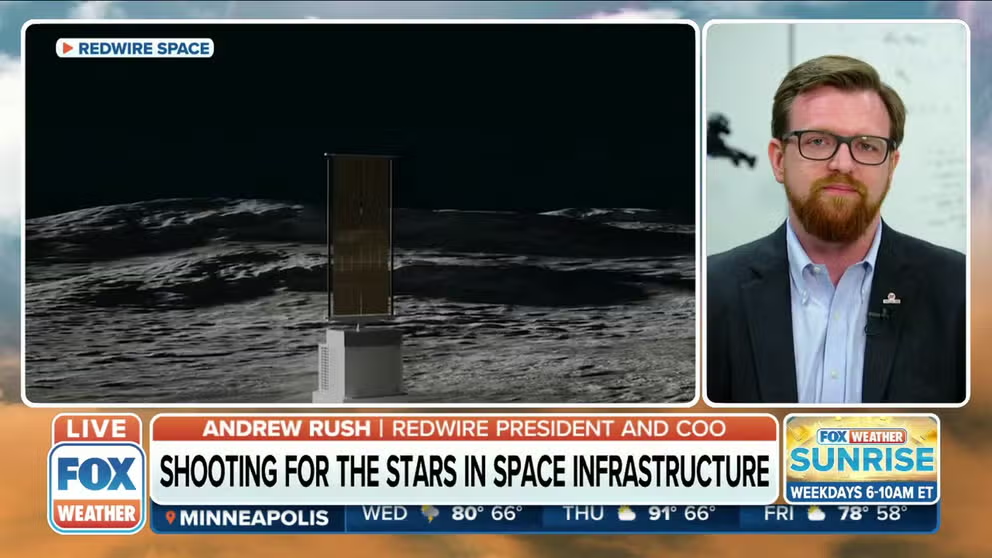Getting supplies off Earth is half the battle, Redwire Space says just build it in orbit
3D printing in orbit allows for spacecraft to launch on smaller rockets and then be built out in space, or even later repaired eliminating space debris
3D printers helping build tools, infrastructure in space
COO Tom Painter discusses how his company Redwire Space has developed 3D printers for astronauts on the International Space Station.
JACKSONVILLE, Fla. – Part of the problem of space travel is packing everything for a mission and planning for the unexpected in orbit. Redwire Space plans to launch new technology that can manufacture in space, adding on small satellites, providing power and possibly eliminating space debris.
Redwire Space President and COO Andrew Rush compared multi-planetary travel to a camping trip, saying you want to have all the supplies with you, but with 3D printing and in-space manufacturing, that is no longer necessary.
'MOST INTENSE' SOLAR FLARE CAPTURED ON STUNNING IMAGERY
"We have to take tools with us to be able to live off the land, to be able to build landing pads and houses and space stations so that we can sustainably live on this planet," Rush told FOX Weather. "We, at Redwire, not only have developed 3D printers that can produce wrenches and hand tools for astronauts on the International Space Station but also larger 3D printers and robotics assembly techniques that can build satellites and entire space stations one day in low-Earth orbit and then beyond even."
Redwire currently has an additive manufacturing printer on the International Space Station capable of printing everyday tools or parts.
NASA Administrator Bill Nelson and retired NASA astronaut John Grunsfeld were invited to Redwire Space headquarters in Jacksonville Tuesday to see how the company can 3D print spacecraft parts in space.
"This is the kind of progress that we need. And it's what we find in our public-private partnerships is that they are often quicker to produce than just a legacy government program," Nelson said of NASA funding for commercial space companies like Redwire. "And yet you need that legacy government program to give the substantial foundation for all of the public, private partnerships as well."
With nearly $74 million in NASA funding, Redwire has developed the technology to a point where it is ready to launch an On-Orbit Servicing, Assembling and Manufacturing (OSAM) demonstration mission next year. OSAM-2 is building on Redwire's Archinaut platform, which will build structures in space using a robotic arm. Once in orbit, OSAM-2 will unfurl a solar array and 3D print two beams that extend about 30 feet from the spacecraft.
Building and 3D printing in space means that spacecraft can launch on smaller rockets and then be added to in orbit or even repaired, extending the life of a satellite and eliminating space debris.
The Department of Defense tracks more than 27,000 pieces of space junk, but many elements are too small to be tracked by sensors but remain a threat to the ISS and other spacecraft in orbit.
"An object traveling very fast in space and can really damage the space station or other satellites," Rush said. "Even just a small object, traveling fast can do a lot of damage."
Space debris travels over 15,000 mph, and the space station regularly needs to move in orbit to avoid a strike. Last year, a Russian military anti-missile test created thousands of pieces of space debris alone.
"The robotic techniques that we use to do assembly or manufacturing and reconfiguration, those can also be used to capture space debris, space junk and put those either in an orbit where they'll burn off or put them in what's called a graveyard orbit to stay out of the way of active space stations and satellites," Rush explained.
Nelson said the possibilities for building in orbit could also extend the life of a satellite.
"What about a defunct satellite? Go up and fix it or if it's run out of fuel, go up and refuel it," Nelson said. "It's a whole new era in space."
OSAM-2 will lift off on a ride-sharing launch sometime next year with SpaceX.




